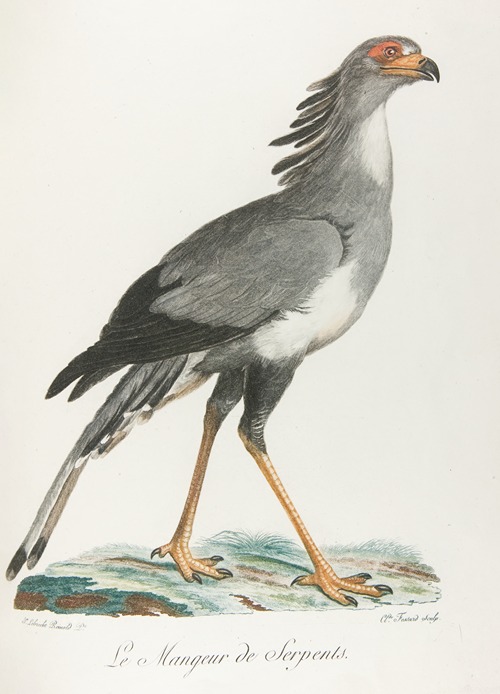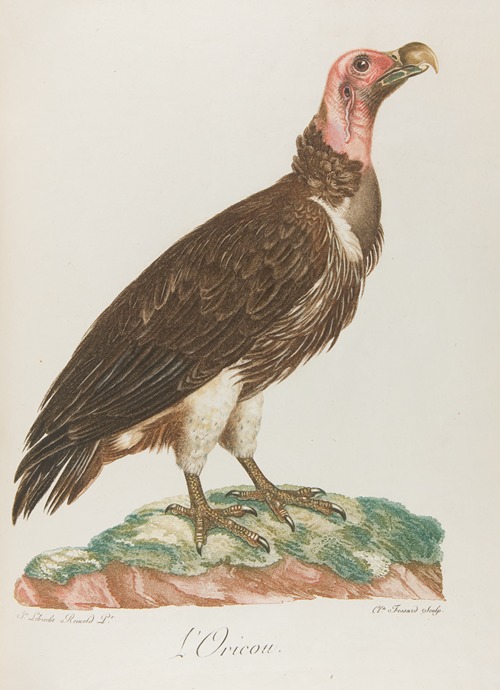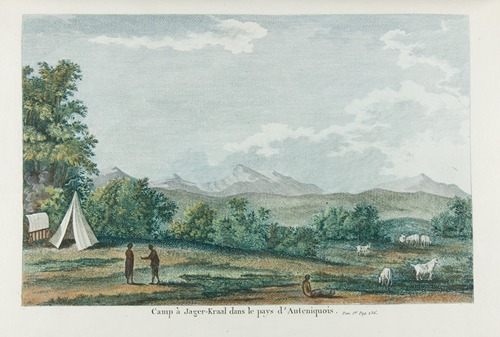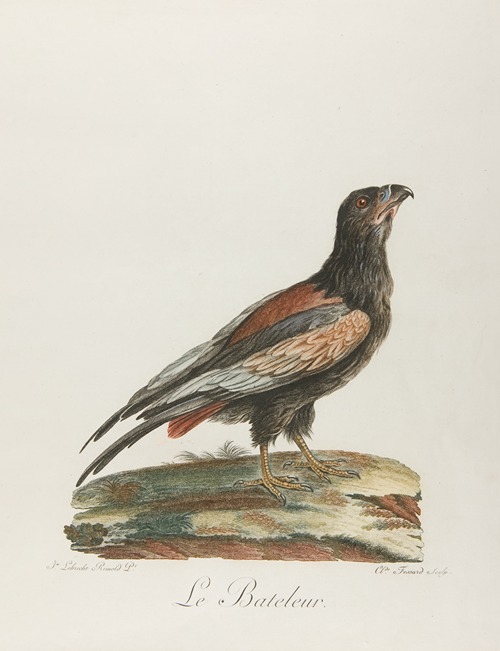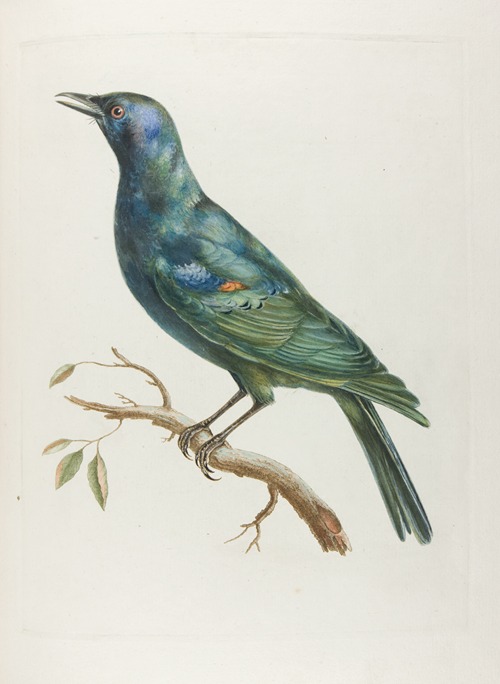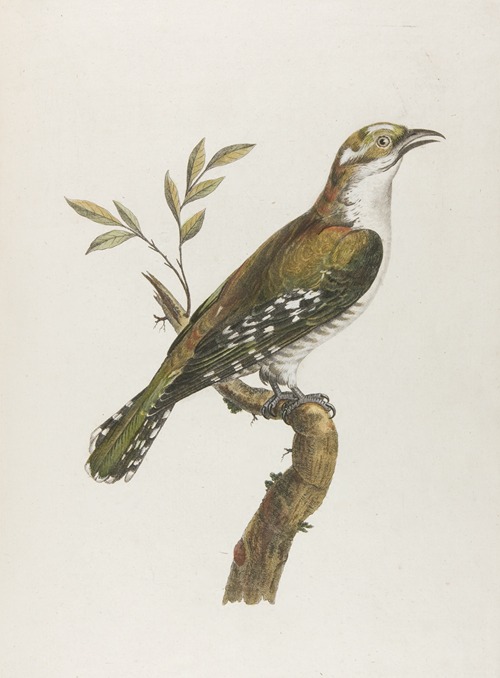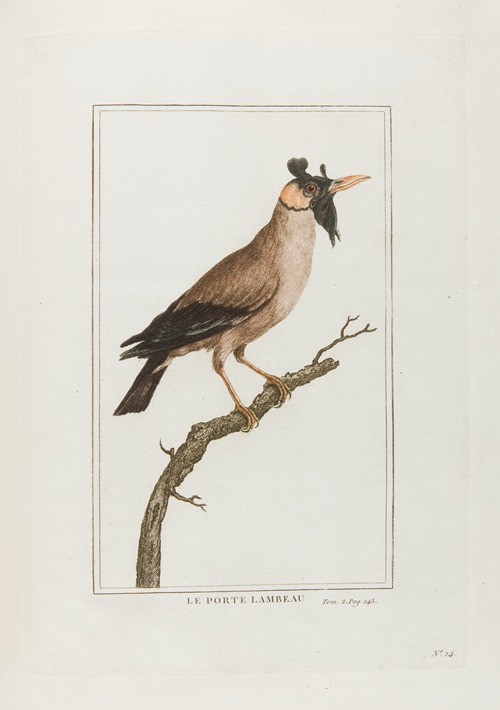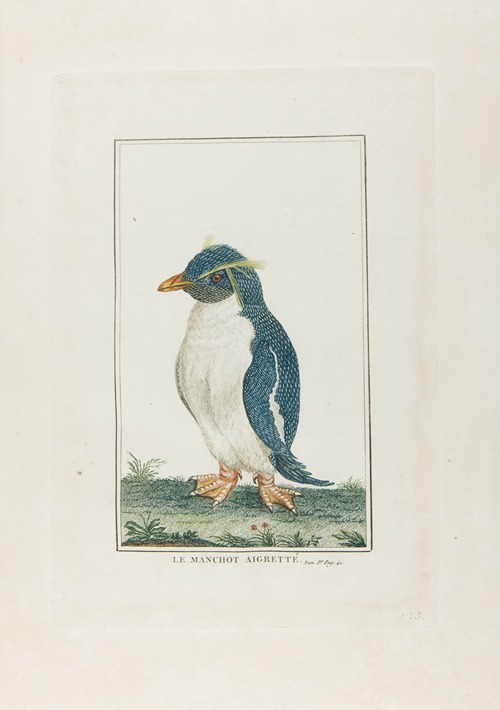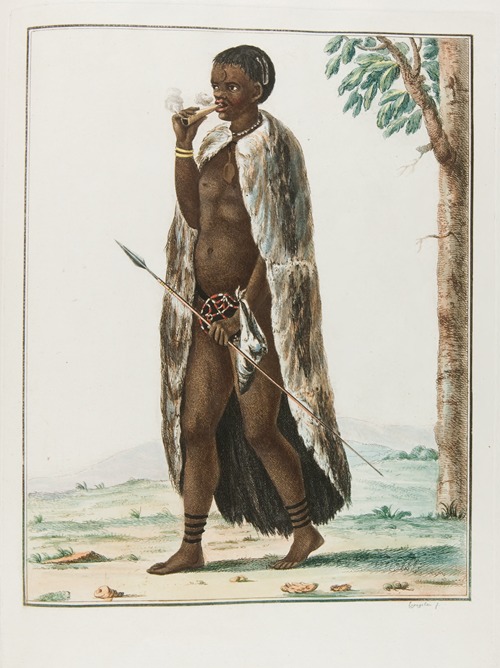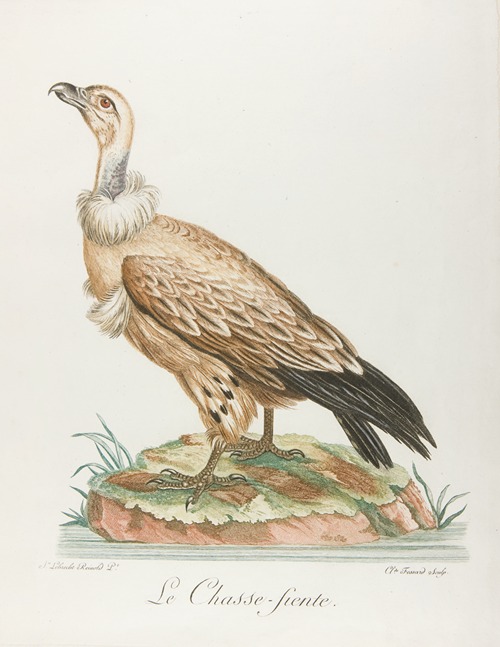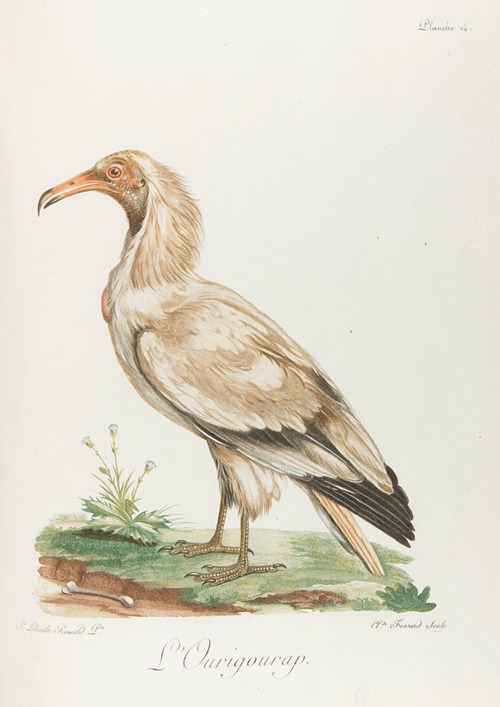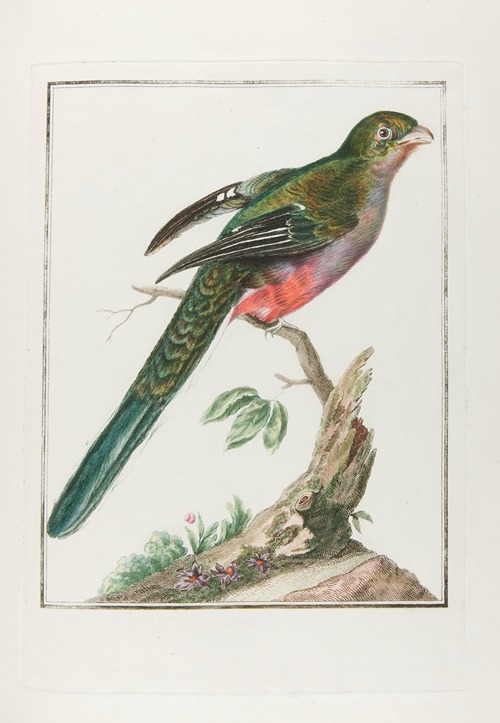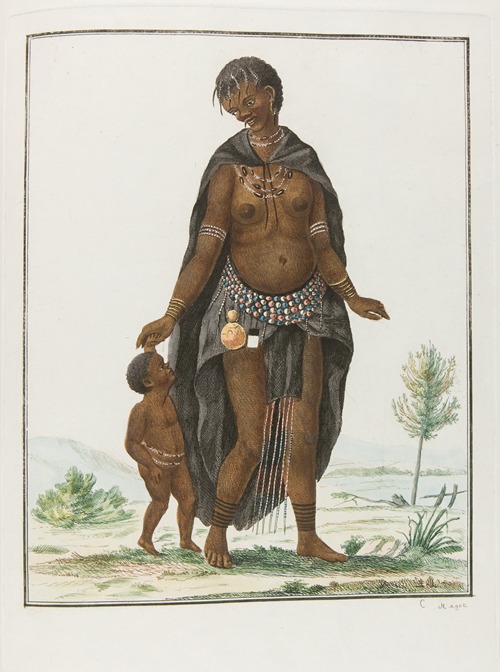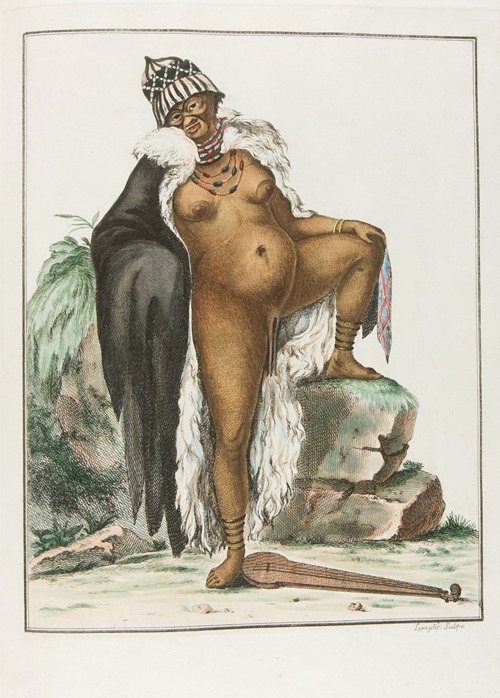
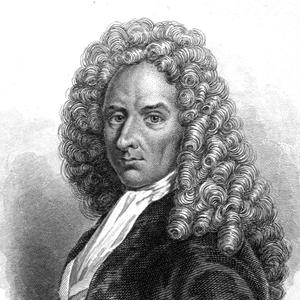
François Levaillant was a French author, explorer, naturalist, zoological collector, travel writer, and noted ornithologist. He described many new species of birds based on birds he collected in Africa and several birds are named after him. He was among the first to use colour plates for illustrating birds and opposed the use of binomial nomenclature introduced by Carl Linnaeus, preferring instead to use descriptive French names such as the bateleur (meaning "tumbler or tight-rope walker") for the distinctive African eagle.
François Vaillant was born in Paramaribo, the capital of Dutch Guiana (Surinam), the son of Nicolas François, a French lawyer from Metz who had fled there after eloping with his mother Catherine Joséphine and then took up a position as the French Consul. Growing up amid forests, François took an interest in the local fauna, collecting birds and insects. His family returned to France in 1763. In 1772, François joined the Berry cavalry regiment as a cadet officer in Metz but was eventually rejected as an officer because he was not tall enough. He married Suzanne de Noor in 1773. He worked with a local apothecary, Becoeur, who had developed an arsenic-based soap to preserve birds. In 1777, he moved to Paris and started a career as a trader in natural history specimens.
He went to the Cape of Good Hope in 1780, at the age of 27, nominally as a gunner's mate for the Dutch East India Company, but almost certainly sponsored by the Treasurer-General, Jacob Temminck with the understanding that he would strengthen Temminck's collection. He decided to study the bird and animal life in their natural habitat. At that time, South Africa was a relatively unknown and exotic location and he collected specimens that would establish his reputation within the scientific community until July 1784 when he made his way back to Holland and France. He made three journeys, one around Cape Town and Saldanha Bay (April to August 1781), one eastwards from the Cape (December 1781 to May 1783) and the third to the Orange River and into Great Namaqualand (June 1783 to c. May 1784). Researchers have to some extent adjusted the dates supplied by Levaillant. During the first expedition his collection was on the vessel Middelburg, which was attacked and sunk by the English in Saldanha Bay. He did however manage to return with over 2000 specimens of birds, insects, mammals and plants. During this trip he changed his name to Le Vaillant.
An illustrative map of his travels was produced around 1790 for King Louis XVI. Measuring nine feet wide and six feet high, the map depicts the travels and the landscape met with. The cartographic elements of the map were made by Perrier with the insets of animals and landscapes by Van Leen. The birds were by Reinold. Sixty two pictures of fauna and flora were stuck onto the map. One of the animals depicted is the now extinct bluebuck.
On his return he published Voyage dans l'intérieur de l'Afrique (1790, 2 vols.), and Second voyage dans l'intérieur de l'Afrique (1796, 3 vols.), both of which were best sellers across Europe, translated into several languages. He had his drafts edited by Casimir Varon. It has been suggested that the success of the first book drove him to become more creative in the descriptions of the second voyage, many parts of which are considered to be fiction. He also published Histoire naturelle des oiseaux d'Afrique (1796–1808, 6 vols.) with drawings by Jacques Barraband, Histoire naturelle des oiseaux de paradis (1801–06), Histoire naturelle des cotingas et des todiers (1804) and Histoire naturelle des calaos (1804). He rarely sketched the birds in their natural environment but collected the skins which were stuffed and mounted on his return. More talented artists were then commissioned to illustrate the specimens for printing. Levaillant's illustrations often influenced scientific names given by, among others, Vieillot, Stephens and Wilkes.
He and De Noor divorced when divorce became legal during the French Revolution. By then he had already started a relationship with Pierrette Foyot, whom he married in Paris in June 1789. Pierrette was the daughter of judge Didier Francois Foyot of Sezanne. A dowry of 50,000 francs helped the couple and they had four children (including a son named Jean-Jacques Rousseau Levaillant who took an interest in ornithology). Levaillant claimed later to have been in prison during the time of the French Revolution but this was untrue—he was in fact close to many revolutionary figures and even applied for a post at the Natural History Museum through the Committee for Public Safety. Foyot's family gave them an estate at La Noue, near Sézanne and Levaillant moved between La Noue and Paris where he kept up a business as naturalist. After Foyot's death in May 1798, Levaillant lived with a younger woman, Rose Dubouchet, with whom he had four children. He died in La Noue in 1824. Four of his sons served in the French army, all earning the Légion d'honneur. By the time of his death, the family name had become Levaillant. Through Foyot's family, he was a grand uncle of the French poet Charles Baudelaire, who read Levaillant avidly as a young student.
